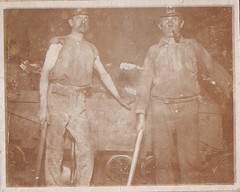 This summer I was part of an amazing reading group where we slowed to a crawl and closely read Bruno Latour’s Politics of Nature. When I say we read the book, I mean we literally went around the table and read the book out loud, stopping to discuss difficult passages until we were confident we understood them.
This summer I was part of an amazing reading group where we slowed to a crawl and closely read Bruno Latour’s Politics of Nature. When I say we read the book, I mean we literally went around the table and read the book out loud, stopping to discuss difficult passages until we were confident we understood them.
I haven’t taken to the time to read a book this closely in ages, and the experience reinforced the age old addage about finding the universe in a grain of sand. Reading a book that deals with such deep eternal themes, written by a brilliant theoretician who has himself synthesized and integrated an incredible amount of history, philosophy, and literature, was like glimpsing the entire cannon through Latour’s eyes, and well worth the effort.
In this work, Latour performs a root canal on a form of conceptual dualism that has haunted Western thought for millennium. The book revolves around a perplexing circumstance in world we have constructed for ourselves – How did we end up in a world where one set of propositions (usually known as facts) are authoritative, unassailable, and incontrovertible and another set of propositions (usually known as values) are the kinds things we are allowed to argue about?
Apart from the challenge of figuring out which of these flawed categories a particular proposition belongs to, the artificial separation between the tasks of constructing the common world and constructing the common good shuts down all possibility of discourse – before we even get a chance to try to arrive at consensus! The institutionalization of facts and values are so inextricably intertwined that it is folly to erect barriers between these two enterprises.
Latour illustrates his perspective with examples from controversies in the sciences (especially Environmentalism and Political Ecology), but it is trivial to transpose his argument to the great debates between objectivity and subjectivity in Journalism, and the ways that certain kinds of propositions (‘data’ in many conversations about technology, and ‘revelation’ in conversations about religion) are invoked as trump cards to shut down all debate. Medical “science”, especially psychiatry and brain science are horrendous perpetrators of these offenses right now, and the consequences are anything but theoretical. The Onion provides my favorite example illustrating the confusion between facts and values.
Latour’s proposed strategy for re-imagining the mexican standoff between nature/culture, science/democracy, facts/values, objectivity/subjectivity, necessity/freedom, etc is to re-tie a metaphysical Gordian knot as an epistemological one. He would like us to consider an dynamically expanding collective of players/concepts, composed of humans and non-humans (the non-humans have spokespeople, whose assertions are speech acts – qualified by the same kinds of language we use to indicate our confidence in any speech act).
Revisiting and reinterpreting Plato’s metaphor of Cave, Latour traces the West’s tendency to cleanly divide smooth facts from messy values to the flawed idea of aspiring to leave the Cave to grasp/glimpse/experience the Truth. Even if this were attainable, the sojourners would still need to return back into the cave, to mediate and relate their experience to those still trapped within. Instead of aspiring to leave the cave, we need to transcend the entire Cave system.
It isn’t completely fair to criticize a book for what it’s missing (no single book can be all things), but it would be great to expand this line of analysis in the future and elaborate on the role of mediation in the current and imagined collective. It seems pretty clear to me that for Latour, the ‘Sciences’ encompass the entire enterprise of Science, including the scientists, the funders, the corporations, the educators, and the scientific journalists. But, there is little in the book that unpacks these relations.
A broader criticism sets an argument that John Durham Peter’s advanced in Speaking into the Air, against Latour’s conception of the Collective. Peter’s argues that we often view communication as salvation, when in fact alot of discourse never leads to consensus, and there are perspectives that are mutually incommensurate and irreconcilable. I may be naive to think the Collective that Latour dreams of is a realistic aspiration, though I sure would love to live to participate in it.
I also want to explore the connections between this work and the Death of Environmentalism essay I encountered last year. I think Shellenberger and Nordhaus’ argument is a vivid and direct application of the theory Latour argues in The Politics of Nature.
Ulises Mejias’ work on Networked Proximity is another work which might be fascinating to juxtapose with the dynamically expanding collective (which, can be thought about as a network). Ulises’ notions of the para-nodal might be crucial to consider when the collective invokes the power to take things into account.
 By now you may have heard of the innovative citizen-driven election monitoring system, Twitter Voter Report (they are getting great press cycles, with purportedly more to come). I actually wrote up and submitted the post that appears on infosthetics.com, a wonderful blog that tracks innovations in data visualization.
By now you may have heard of the innovative citizen-driven election monitoring system, Twitter Voter Report (they are getting great press cycles, with purportedly more to come). I actually wrote up and submitted the post that appears on infosthetics.com, a wonderful blog that tracks innovations in data visualization. Filed by jonah at 12:09 am under epistemology,ethics,fire,water
Filed by jonah at 12:09 am under epistemology,ethics,fire,water 2 Comments
2 Comments 




 It’s been a few weeks since I first
It’s been a few weeks since I first 

